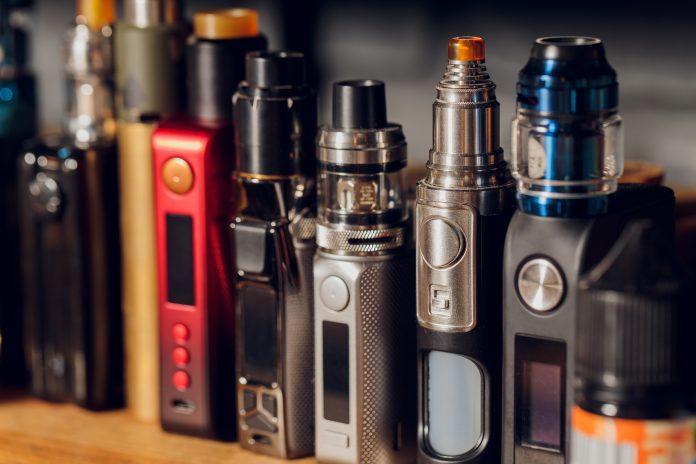U.S. Food and Drug Administration’s Director of the Center for Tobacco Products, Mitch Zeller, discusses here how the U.S. federal review of e-cigarettes and other tobacco products helps protect public health
Over the past two years, policymakers, media, and the public around the world have gained a greater awareness of the U.S Food and Drug Administration’s (FDA) central role in protecting the public health through its work authorising or approving vaccinations, drugs and diagnostic tests to help end the COVID-19 pandemic.
FDA is the government agency responsible for ensuring the safety, efficacy, and security of human and veterinary drugs, biological products, and medical devices, and ensuring the safety of the U.S. food supply, cosmetics and products that emit radiation.
FDA also has the responsibility for regulating the manufacture, marketing, and distribution of tobacco products to protect the public health and to prevent tobacco use among youth. The FDA Center for Tobacco Products (CTP) where I serve as Director, leads the agency’s tobacco control and prevention efforts.
CTP uses a comprehensive approach to tobacco regulation: We conduct and support research, issue regulations, ensure compliance with the law, educate the public – especially youth – on the dangers of tobacco use, and make science-based decisions on whether new tobacco products can be marketed in the U.S. – a process known as “premarket review.”
FDA’s premarket review of new tobacco products is an essential tool for ensuring that products on the market meet a set of legal standards set forth by Congress to protect public health; this includes reviewing and evaluating tobacco product marketing applications before products are allowed to be sold.
FDA assesses the risks and benefits to the population as a whole, including users and nonusers of the product, and takes into account the increased or decreased likelihood that existing users of tobacco products will stop using such products, as well as the increased or decreased likelihood that those who do not use tobacco products will start using such products. The impact of a product on youth initiation and use is also a critical consideration.
Such review and assessment have been at the heart of FDA’s recent and ongoing work to regulate e-cigarettes and other electronic nicotine delivery systems (ENDS).
Because there are no safe tobacco products, FDA does not grant approval of any tobacco product. Although different tobacco products have various levels of health risk, they are all inherently dangerous. However, a company may receive marketing authorisation for a tobacco product if it meets the public health standard set by law, which for an ENDS product requires FDA determination that marketing the product would be “appropriate for the protection of the public health.”
While there is hope that ENDS products could help addicted adults who smoke transition away from combustible tobacco to a potentially less harmful form of nicotine delivery, and we are aware of anecdotal accounts of adults who have quit smoking altogether after using e-cigarettes, we certainly do not want people who do not currently use tobacco products, especially young people, to start.
After receiving millions of premarket applications for e-cigarette products last year, the agency has recently issued marketing denials for over one million flavoured ENDS. Many of these denials were because applicants did not provide sufficient evidence that the benefit to adult smokers who used the flavoured products would overcome the public health concern posed by the well- documented and considerable appeal of these products to youth.
E-cigarettes are the most commonly used tobacco product by youth in the U.S. According to recent data from the National Youth Tobacco Survey, over two million U.S. high school and middle school students used e-cigarettes in 2021, of whom more than 85% used flavoured e-cigarettes. Among high school students who currently used e-cigarettes, 43.6% reported use on 20 or more of the past 30 days, and 27.6% reported daily use. Among middle school students who currently used e-cigarettes, 17.2% reported use on 20 or more of the past 30 days and 8.3% daily use. Most e-cigarettes contain nicotine, often at higher levels than other tobacco products, and we know that nicotine is especially harmful to youth, whose brains are still developing. Moreover, nicotine is the same highly addictive chemical in cigarettes that keeps people smoking even when they want to quit.
FDA’s review of applications, nonetheless, is conducted on a case-by-case basis, and any product with sufficient evidence to meet the public health standards in the law will be authorised. For example, R.J. Reynolds Vapor Company recently received marketing authorisation in October 2021 for an ENDS device and tobacco-flavoured e-liquid pods after FDA determined that the manufacturer’s data demonstrated its products could benefit addicted adult smokers who switch to these products – either completely or with a significant reduction in cigarette consumption – by reducing their exposure to harmful chemicals.
As part of this scientific review, FDA considered the risks and benefits to the population as a whole, including users and non-users of tobacco products, and importantly, youth. Available data suggest that most youth and young adults who use ENDS begin with flavours such as fruit, candy or mint, not tobacco flavoured. These data reinforce the FDA’s decision to only authorise the company’s tobacco-flavoured products, while denying the applications for their flavoured products, because these products are less appealing to youth and authorising these products may be beneficial for adult combusted cigarette users who completely switch to ENDS or significantly reduce their cigarette consumption.
FDA is committed to working to transition the current U.S. marketplace to one in which all ENDS products available for sale have demonstrated that marketing of the product is “appropriate for the protection of the public health.”
In an ever-evolving landscape, the premarket review of new tobacco products is essential to protecting public health. The FDA will continue to make application decisions and formulate policies based on the best available science with the goal of reducing the preventable disease and death caused by tobacco use. To learn more about our comprehensive efforts in this area, visit www.fda.gov/tobacco-products.
Contributor Details
Editor's Recommended Articles
-
Must Read >> The effects of vaping on vascular health
-
Must Read >> Tobacco dependency: Treat it like any other illness
-
Must Read >> The tobacco ‘endgame’: Is it possible?














